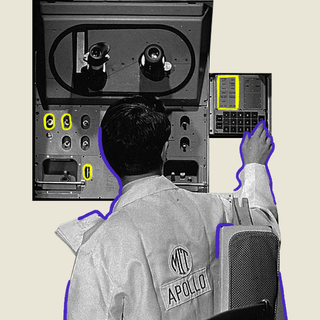The term “millipede” derives from a Latin word that means a “thousand feet.” But so far, 750 is as high as known millipedes would go — until now, that is. Scientists just discovered a first-of-its-kind millipede with a whopping 1,306 legs, deep inside a mining field in Western Australia. To put this into context, the creature not only breaks the record for the most number of legs among millipedes — but among all animals on Earth.
The researchers, who chanced upon the creature while conducting an environmental impact assessment, named the millipede Eumillipes Persephone — Eumillipes meaning “true-thousand foot” in Latin, and Persephone referring to the Greek Goddess of the underworld.
These lofty credentials rest upon a surprisingly tiny body. The millipede measures 0.95mm wide and 95.7mm long. A paper describing the find, published on Thursday in Nature Scientific Reports called the “diminutive” creature a “record-setting millipede.”
Millipedes are among the first creatures on Earth to breathe atmospheric oxygen and have lived on the planet for more than 400 million years. And yet, we know surprisingly little about them. “[P]rimary knowledge of millipede diversity lags tremendously behind other animal groups,” the researchers note.
The subterranean animal has finally risen to the ranks of being called the chosen one, as researchers are terming it the “first-true” millipede — referring to how it actually does live up to its species name.
Related on The Swaddle:
Scientists Have Discovered Fossils of World’s Earliest Parasites
For creatures that have outlasted us for so long, finding the “true” millipede now is significant. It also helps increase estimates of just how many types of millipedes there might be. Bruno Buzatto, a biologist from Bennelongia Environmental Consultants, told The Guardian that the find was “incredibly lucky.”
The organisms deep underground, moreover, play a pivotal role in facilitating many natural processes above-ground that the biodiversity depends on. E. persephone was found 60 meters underground in the Goldfields-Esperance region, and researchers have new insights into just how rich in biodiversity the region might be. While land aboveground altered drastically over the years, the areas below-ground remained relatively unchanged — maintaining a stable temperature and humidity.
“These underground habitats, and their inhabitants, are critically understudied, despite their ecological importance in filtration of groundwater and screening of environmental toxins,” the researchers wrote.
The one-true millipede’s discovery may be a joyous event, but it is undercut by an immediate threat. The threat of mining — the region it was discovered in is rich in gold, nickel, and other minerals — makes the “documentation of this species and conservation of its habitat” of “critical importance,” the paper noted.
Indeed, the event speaks to a sobering fact: that many species are being wiped out before they even had the chance to be discovered.




